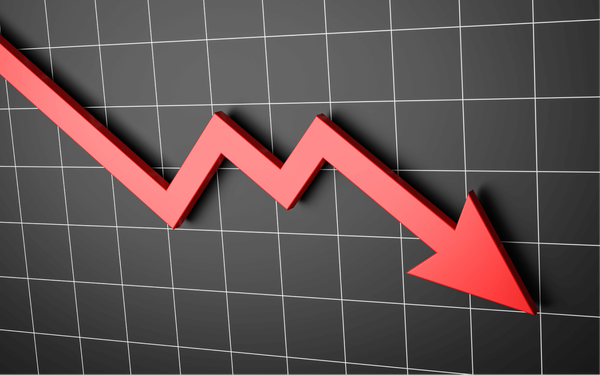Price Action Trading guide for beginners
Price action trading helps spot trends, reversals, and key levels using charts alone, perfect for beginners.

Price action trading is a method that relies solely on observing how an asset’s price moves over time without depending on fancy indicators or external analysis tools.
Traders who use this approach draw insights from chart patterns, trends, candlestick formations, support and resistance’s behaviour and momentum swings. It demands patience, discipline, and a clear mind to see what the market is showing rather than what models suggest.
Let's unpack all basics you need to begin trading using price action confidently.
Fundamental concepts of Price Action Trading
These are key ideas every beginner must understand before trading with price action.
1. Candlestick Basics
Each candlestick captures four key pieces of information: the open, high, low, and close price for a given time period.
The body shows the open-to-close movement, the wick (or shadow) reveals extremes (high and low). A long body suggests strong momentum; short body plus long wicks indicate indecision.
Recognising these shapes helps you infer whether buyers or sellers are in control.
2. Support and Resistance
Support is a price level where buying interest tends to stop a further drop because demand increases there.
Resistance is a mirror opposite: it is where selling pressure tends to stall upward price moves. Price often bounces off these levels. If it breaks through, those levels may reverse roles (support becomes resistance, or resistance becomes support).
Frequency of tests, volume at those levels and the time frame strengthen their significance.
3. Market Structure
Price action does not move at random. It moves in trends or ranges. In a trending market, price makes a series of higher highs and higher lows when up-trending; or lower lows and lower highs when down-trending.
Range bound (or sideways) markets show price oscillating between established support and resistance without clear directional bias.
You need to identify which market you are in to apply correct setups.
Common Price Action Patterns & Setups
When you are trading price action, you rely on chart formations and candlestick shapes to find high-probability trade setups. These patterns help identify likely reversals or trend continuations. Below are some of the most reliable patterns and how they can be used.
Engulfing / Harami
One candle “engulfs” the prior one (for engulfing). Harami is a smaller candle completely inside the previous. When they appear at key support or resistance zones, they signal potential reversals. A bullish engulfing after a downtrend or bearish after an uptrend are stronger signals.
Inside Bar / Outside Bar
Inside Bar: current bar is fully contained within the high–low range of the previous bar. Outside Bar: it fully covers or exceeds the prior bar. These signal consolidation or potential breakout zones. Traders wait for breakouts above or below these bars for entry.
Double Top / Double Bottom
Two peaks (top) or troughs (bottom) roughly at the same level, separated by a middle pull-back. These are reversal structures. A double bottom suggests a shift from downtrend to uptrend when price breaks above the “neckline”. Conversely for double top.
Triangles, Wedges, Flags, Pennants
Patterns formed by price compressing: trend lines converge (triangle, wedge) or move in parallel lines (flag), small pennants look like mini triangles. Usually continuation signals. After a trend, price enters a brief consolidation (pattern) and then breaks out in the direction of the prior move. Volume and breakout confirmation matter.
Reversal Bars (Pin Bar, Hammer, Shooting Star etc.)
Candlestick with long wick (tail) and short body. E.g., hammer has long lower shadow, shooting star has long upper shadow. They show rejection of price levels. For example, hammer at support suggests buyers are stepping in. These are best when aligned with trend or major support/resistance.
Reading Price Action in real time
Here is how you actually read price action live, not just theory.
1. Multiple timeframes for context
Use a higher timeframe (for example daily or 4-hour) to establish the overall trend and identify major zones of support and resistance.
Then drop down to a shorter timeframe (for example 1-hour or 15-minutes) to spot precise entries or exits.
This “top-down” view helps prevent entering trades that conflict with the larger trend.
2. Volume confirmation
Watch volume as price approaches key levels. If price is breaking resistance or support, higher volume can validate that the move has strength.
Low volume during a breakout often signals weakness and increased risk of reversal.
3. Volatility and external events
Real-time price action reacts strongly to news releases, economic data, or unexpected events.
Before and after such events, expect greater price swings.
Understanding when these are coming allows you to avoid being caught off guard, or to time entries and exits more safely.
4. Filter signals via trend strength & structure
Pay attention to how price is behaving: higher highs, higher lows (uptrend), or lower highs, lower lows (downtrend).
Also observe whether the price is ranging.
A reversal pattern or candlestick signal has much more value if it aligns with the market structure on the higher timeframe.
Conclusion
Trading using price action works best when you focus on clarity, consistency, and discipline. Study real charts, practise with small risks, and trust your observations rather than relying on indicators alone. Over time that builds your intuition.




